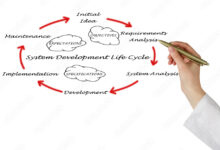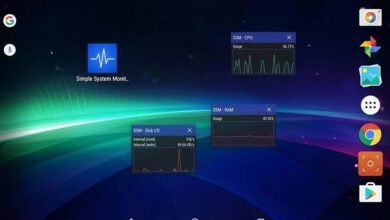System Notifications: 7 Powerful Ways to Master Your Alerts
Ever wonder why your phone buzzes at the perfect (or worst) time? System notifications are the silent conductors of our digital lives—guiding, alerting, and sometimes overwhelming us. Let’s dive into how they work, why they matter, and how to take control.
What Are System Notifications and Why Do They Matter?

System notifications are automated alerts generated by an operating system or software to inform users about events, updates, or actions. These can range from a simple battery warning to a critical security patch alert. They act as a bridge between the machine and the user, ensuring we stay informed without needing to constantly check apps or system status.
The Core Purpose of System Notifications
At their heart, system notifications exist to improve user experience by delivering timely, relevant information. Whether it’s a calendar reminder, a software update, or a network disconnection warning, these alerts help users make informed decisions quickly.
- Provide real-time updates from apps and the OS
- Alert users to security threats or system errors
- Enhance productivity with timely reminders
“Notifications are the nervous system of modern computing—without them, users would be blind to what’s happening behind the scenes.” — Tech UX Researcher, 2023
Types of System Notifications
Not all notifications are created equal. They vary by urgency, source, and delivery method. Understanding the types helps users manage them effectively.
- Alerts: High-priority messages that require immediate attention (e.g., low battery, security breach).
- Reminders: Time-based prompts (e.g., calendar events, medication alerts).
- Status Updates: Background information (e.g., Wi-Fi connected, update installed).
- Progress Indicators: Show task completion (e.g., file download progress, installation status).
Each type serves a distinct role, and misclassifying them can lead to notification fatigue or missed critical alerts.
How System Notifications Work Across Platforms
Different operating systems handle system notifications in unique ways. While the core function remains the same, the design, delivery, and management vary significantly between platforms like Windows, macOS, Android, and iOS.
Windows System Notifications: Action Center & Toast Alerts
Windows uses the Action Center (now integrated into the Notification Center in Windows 11) to manage alerts. These appear as toast notifications—transient pop-ups that slide in from the corner of the screen.
- Supports rich content: images, buttons, and progress bars
- Customizable per app via Settings > System > Notifications
- Can be prioritized or silenced based on user preferences
Microsoft’s Adaptive Notifications allow developers to create dynamic, interactive alerts that respond to user input directly from the notification panel.
macOS and the Notification Center
Apple’s macOS uses a streamlined Notification Center that syncs across devices via iCloud. Notifications appear as banners or alerts, depending on user settings.
- Banners: Slide down briefly and disappear
- Alerts: Stay on screen until dismissed
- Grouped by app or time for cleaner organization
macOS also supports Focus Modes, allowing users to filter system notifications based on activity (e.g., Do Not Disturb, Work, Sleep). This feature is deeply integrated with the Calendar and Reminders apps, enhancing contextual relevance.
Android: Flexible and Developer-Friendly
Android offers one of the most flexible notification systems, thanks to its open architecture. Google’s Notification API allows developers to create channels, priority levels, and rich media alerts.
- Notification Channels: Let users control alerts per app category (e.g., messages, updates, promotions)
- Priority Levels: From silent to high-priority alerts with sound and vibration
- Direct Reply: Respond to messages without opening the app
Android 13 introduced stricter permission controls, requiring apps to ask users before sending notifications—giving more control back to the user.
iOS: Clean, Controlled, and Secure
Apple’s iOS takes a minimalist, user-centric approach. Notifications are delivered through the Lock Screen and Notification Center, with strong emphasis on privacy and relevance.
- Notification Summary: Bundles non-urgent alerts for later review
- Live Activities: Real-time updates for ongoing tasks (e.g., ride-sharing, workouts)
- Focus Filters: Integrate with apps to show only relevant alerts
iOS 15+ allows users to mute notifications from specific contacts or apps temporarily, reducing distractions during work or sleep hours.
The Psychology Behind Notification Design
Why do some notifications grab our attention instantly while others go unnoticed? The answer lies in cognitive psychology and behavioral design. System notifications are engineered to trigger specific user responses based on urgency, emotion, and habit.
Attention and Cognitive Load
Notifications compete for limited cognitive resources. A well-designed alert minimizes mental effort while maximizing clarity. Research shows that notifications with clear icons, concise text, and appropriate timing are more likely to be acted upon.
- Red colors signal urgency (e.g., errors, warnings)
- Vibration and sound increase alert salience
- Too many alerts lead to habituation—users start ignoring them
A study by the University of British Columbia found that users who received fewer, more relevant notifications reported higher productivity and lower stress levels.
The Dopamine Effect
Every time a notification appears, it can trigger a small dopamine release—especially if it’s positive (e.g., a like, message, or achievement). This reward mechanism is why people often feel compelled to check their devices.
- Social notifications are most addictive due to emotional payoff
- App developers sometimes exploit this with push notifications
- System-level controls help users break the cycle
“The ping of a notification is the digital equivalent of a slot machine lever pull—designed to keep you coming back.” — Nir Eyal, Author of ‘Hooked’
Designing for User Control
Modern OS designers are shifting from interruption to invitation. Instead of bombarding users, notifications are now designed to be respectful and optional.
- Deliver notifications in batches (e.g., iOS Summary)
- Allow granular control per app
- Use machine learning to predict relevance (e.g., Google’s Adaptive Notifications)
This shift reflects a growing awareness of digital well-being and the need for sustainable interaction patterns.
Common Issues with System Notifications
Despite their usefulness, system notifications can cause frustration when mismanaged. From missed alerts to constant interruptions, these issues affect user experience across devices.
Notification Overload
Too many alerts lead to notification fatigue—a state where users become desensitized and start ignoring all notifications, even important ones.
- Caused by apps sending excessive or irrelevant alerts
- Leads to decreased productivity and increased stress
- Solution: Use focus modes and notification grouping
A 2022 survey by Asurion found that the average smartphone user receives over 45 notifications per day—many of which are ignored.
Missed or Delayed Alerts
Sometimes, critical notifications don’t arrive on time—or at all. This can be due to power-saving modes, app bugs, or network issues.
- Background app restrictions can prevent alerts
- Do Not Disturb or Focus modes may block messages
- Sync delays in cloud-based systems (e.g., email, calendar)
To prevent this, ensure apps have proper permissions and are excluded from battery optimization where necessary.
Security Risks and Spoofing
Malicious actors can exploit notification systems to trick users. Fake system notifications—designed to look like OS alerts—can prompt users to download malware or enter passwords.
- Phishing via fake “security alert” pop-ups
- Apps mimicking system dialogs to gain permissions
- Solution: Only trust notifications from verified system sources
Google and Apple have implemented safeguards, such as labeling third-party notifications and restricting access to system-level UI elements.
Best Practices for Managing System Notifications
Taking control of your notifications isn’t just about silencing noise—it’s about creating a digital environment that supports your goals and well-being.
Customize Per App
Not all apps deserve equal attention. Customize notification settings based on importance.
- Silence social media and promotional alerts
- Enable sound and vibration for messaging and calendar apps
- Use notification channels (Android) or app-specific settings (iOS/macOS) to fine-tune delivery
On Android, go to Settings > Apps & Notifications > [App Name] > Notifications to adjust behavior. On iOS, use Settings > Notifications and select individual apps.
Use Focus and Do Not Disturb Modes
These features let you filter distractions during work, sleep, or personal time.
- Set schedules (e.g., mute notifications after 10 PM)
- Allow exceptions for specific contacts or apps
- Integrate with calendar events (e.g., mute during meetings)
Windows users can enable Focus Assist, while macOS has Focus modes synced across devices.
Regularly Audit Your Notifications
Just like cleaning your inbox, periodically review which apps are sending alerts.
- Uninstall or disable notifications from unused apps
- Check for apps that send excessive or irrelevant alerts
- Update notification preferences as your habits change
A quarterly “notification audit” can significantly improve digital hygiene.
Future Trends in System Notifications
As AI and machine learning evolve, so do system notifications. The future is not just about delivering alerts—but delivering the right alert, at the right time, in the right way.
AI-Powered Notification Filtering
Operating systems are beginning to use AI to predict which notifications matter most. Google’s Adaptive Notifications and Apple’s Notification Summary use on-device intelligence to prioritize content.
- Learn user behavior to suppress low-value alerts
- Surface urgent messages even in Do Not Disturb mode
- Improve over time with usage patterns
This reduces cognitive load and increases relevance.
Context-Aware Alerts
Future notifications will adapt based on location, activity, and even biometrics.
- A calendar alert might wait until you leave home
- A fitness app could delay a message if your heart rate is high
- CarPlay or Wear OS might adjust alerts based on driving or workout mode
Google’s Now on Tap and Apple’s Proactive Suggestions are early examples of this trend.
Unified Cross-Device Notifications
As users own more devices, the need for synchronized alerts grows. Imagine a notification appearing on your phone, then seamlessly continuing on your laptop or smartwatch.
- Apple’s Continuity and Handoff features enable this
- Microsoft’s Cloud Notifications sync across Windows and Android
- Google’s ecosystem links Android, Chrome OS, and Wear OS
The goal is a seamless, unified experience—no matter which device you’re using.
How Developers Can Improve System Notifications
While users can manage alerts, developers play a crucial role in ensuring notifications are useful, not annoying. Poorly designed notifications harm app reputation and user retention.
Follow Platform Guidelines
Each OS has design and usability guidelines for notifications. Adhering to them ensures consistency and user trust.
- Android: Follow Material Design principles
- iOS: Respect Human Interface Guidelines
- Windows: Use Fluent Design for toast notifications
These guidelines cover everything from icon size to message length and interaction patterns.
Implement Notification Channels (Android)
Android requires apps targeting API 26+ to use notification channels. This isn’t just a technical requirement—it’s a user experience best practice.
- Create separate channels for different alert types (e.g., promotions, updates, messages)
- Allow users to disable specific channels without turning off all notifications
- Name channels clearly (e.g., “Order Updates” vs. “Marketing”)
This gives users control and reduces uninstalls due to spammy alerts.
Respect User Preferences
The most important rule: don’t assume users want every alert. Ask permission, provide value, and make opt-out easy.
- Request notification permission at the right moment (not on first launch)
- Explain why notifications are useful
- Provide in-app settings to customize alerts
Apps that respect user choice see higher opt-in rates and better long-term engagement.
System Notifications and Digital Well-Being
In an age of constant connectivity, system notifications are at the center of the digital well-being movement. They can either enhance our lives or erode our focus and mental health.
The Link Between Notifications and Stress
Constant interruptions fragment attention and increase cognitive load. A study published in the Journal of Experimental Psychology found that even the anticipation of a notification can reduce focus and performance.
- Frequent alerts increase cortisol levels (the stress hormone)
- Interruptions take an average of 23 minutes to recover from
- Notification-free zones improve concentration and mood
Managing system notifications is not just a tech issue—it’s a mental health strategy.
Building Healthier Notification Habits
Small changes can lead to big improvements in focus and well-being.
- Turn off non-essential sounds and vibrations
- Use grayscale mode to reduce visual appeal of alerts
- Set specific times to check messages (e.g., every 2 hours)
Both Android Digital Wellbeing and iOS Screen Time offer tools to monitor and limit notifications.
Corporate and Educational Policies
Organizations are starting to recognize the impact of notifications on productivity. Some companies now implement “notification-free” work blocks or encourage employees to use Focus modes during deep work sessions.
- Schools limit notifications during class time
- Remote teams use Slack or Teams status to signal availability
- IT departments configure enterprise devices to suppress non-critical alerts
These policies reflect a growing understanding that attention is a finite resource.
What are system notifications?
System notifications are automated alerts sent by an operating system or application to inform users about events, updates, or actions. They appear on-screen, often with sound or vibration, and can be customized based on user preferences.
Why am I not receiving system notifications?
This could be due to app permissions, Do Not Disturb mode, battery optimization settings, or network issues. Check your device settings to ensure notifications are enabled for the specific app and not blocked by system features.
How can I reduce notification overload?
Customize settings per app, use Focus or Do Not Disturb modes, disable non-essential alerts, and perform regular notification audits. Prioritize alerts that add value and silence those that don’t.
Can system notifications be hacked?
While rare, malicious apps or phishing attempts can mimic system notifications to trick users. Always verify the source and avoid clicking on suspicious alerts. Keep your OS updated to benefit from security patches.
What’s the future of system notifications?
The future includes AI-driven prioritization, context-aware delivery, and cross-device synchronization. Notifications will become smarter, more personalized, and less intrusive, focusing on relevance over volume.
System notifications are more than just pop-ups—they’re a critical part of how we interact with technology. From their technical workings across platforms to their psychological impact, understanding and managing them is essential for productivity, security, and well-being. By customizing settings, respecting user preferences, and embracing future innovations, we can transform notifications from distractions into powerful tools. The key is balance: staying informed without being overwhelmed.
Further Reading:








